
An enthusiastic industrial designer with a thorough approach to the design process, and a particular interest in inclusive and user-centred design.
Final Project
CORA+
Cora+ is a home use CPR aid, designed to guide non-medically trained users through responding to a cardiac arrest emergency. It was designed to be set up easily and quickly by a single user, and reduce the exhaustion of performing compressions.
The device is not only intended for emergency use, but also integrates a training mode for users to refresh their knowledge on CPR practices and how to operate the product.
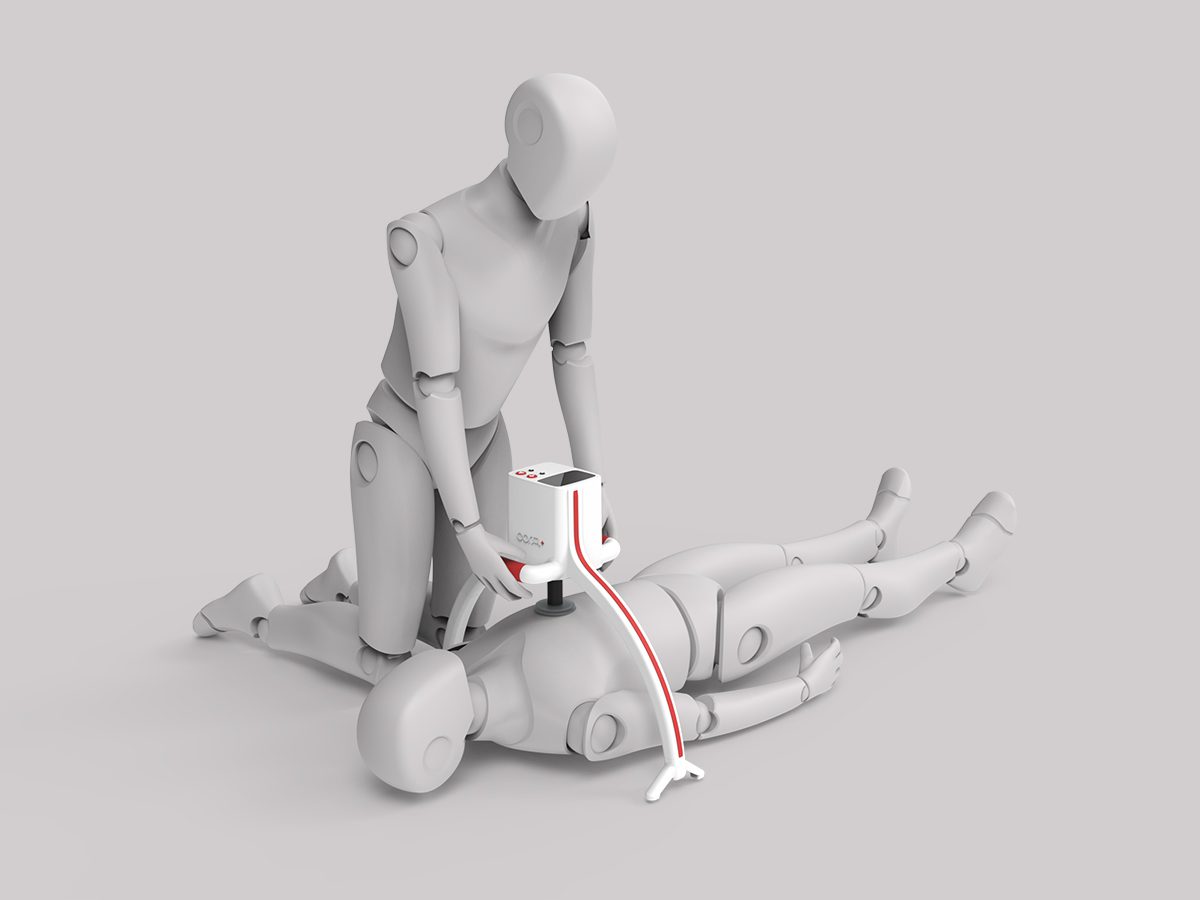
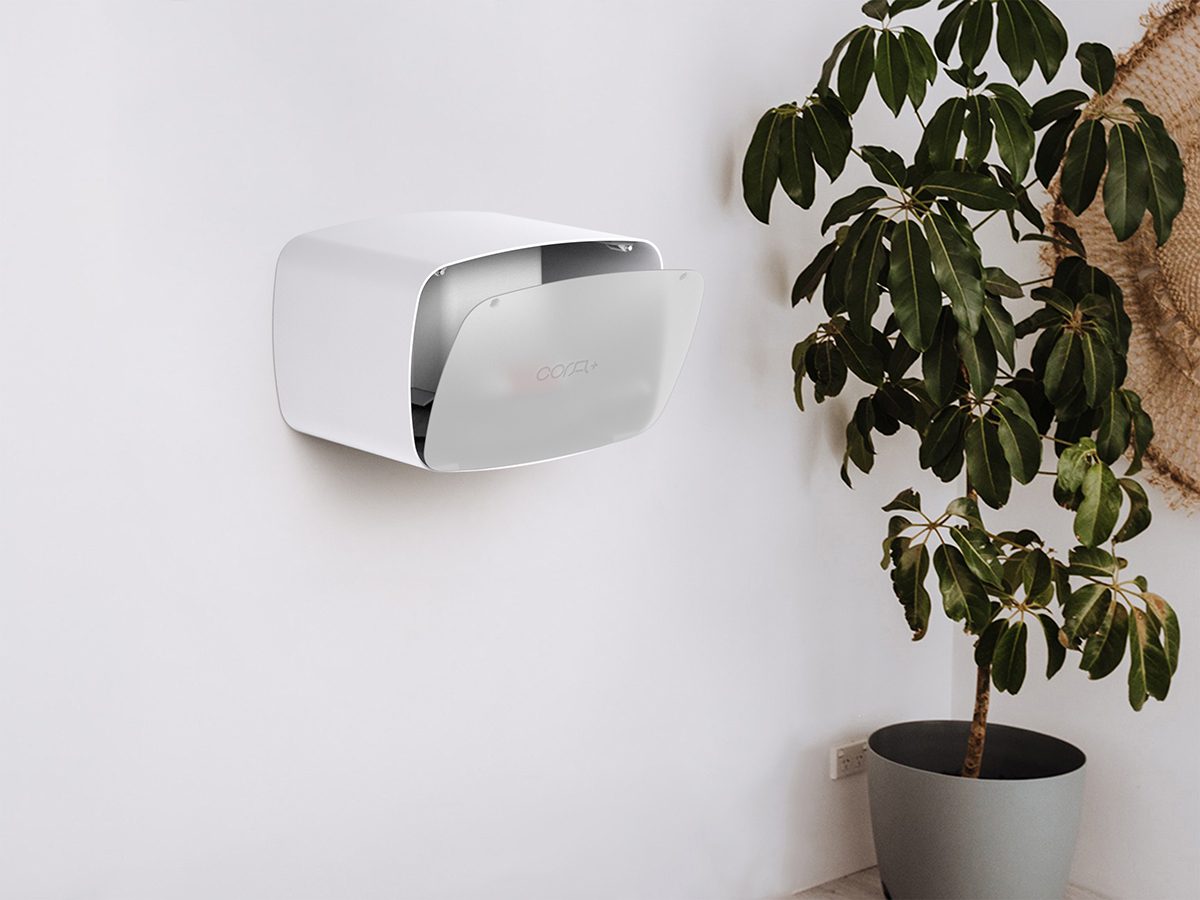
A home use emergency device
With over 70% of cardiac arrest episodes occuring in the home environment, bystanders can be faced with the challenging and stressful responsibility of performing CPR on their own until emergency services arrive. By helping responders recall CPR steps and reducing the effort of performing compressions through the automated mechanism, the device will facilitate the early performance of continuous and uninterrupted compressions, increasing the patient’s survival chances.
The product can be compactly folded and stored in the provided wall mount, conviniently within reach in case of emergency.
Guiding through every step of CPR
Cora+ guides the user through all CPR steps, from safety checks and how to diagnose a cardiac arrest, to correctly setting up the device and performing compressions. This information is provided by visual illustrations, concise written instructions and audible prompts. To further support the user through this distressing and shocking situation, Cora+ will also provide words of encouragement and reassurance to along the process. The device will also provide the emergency responders with important data to continue treatment, such as how long the patient has been unconscious and when the compressions were initiated. Through the device’s training mode, which users will be reminded to interact with periodically, more detailed information can be obtained about the correct CPR practices to adopt in an emergency scenario.
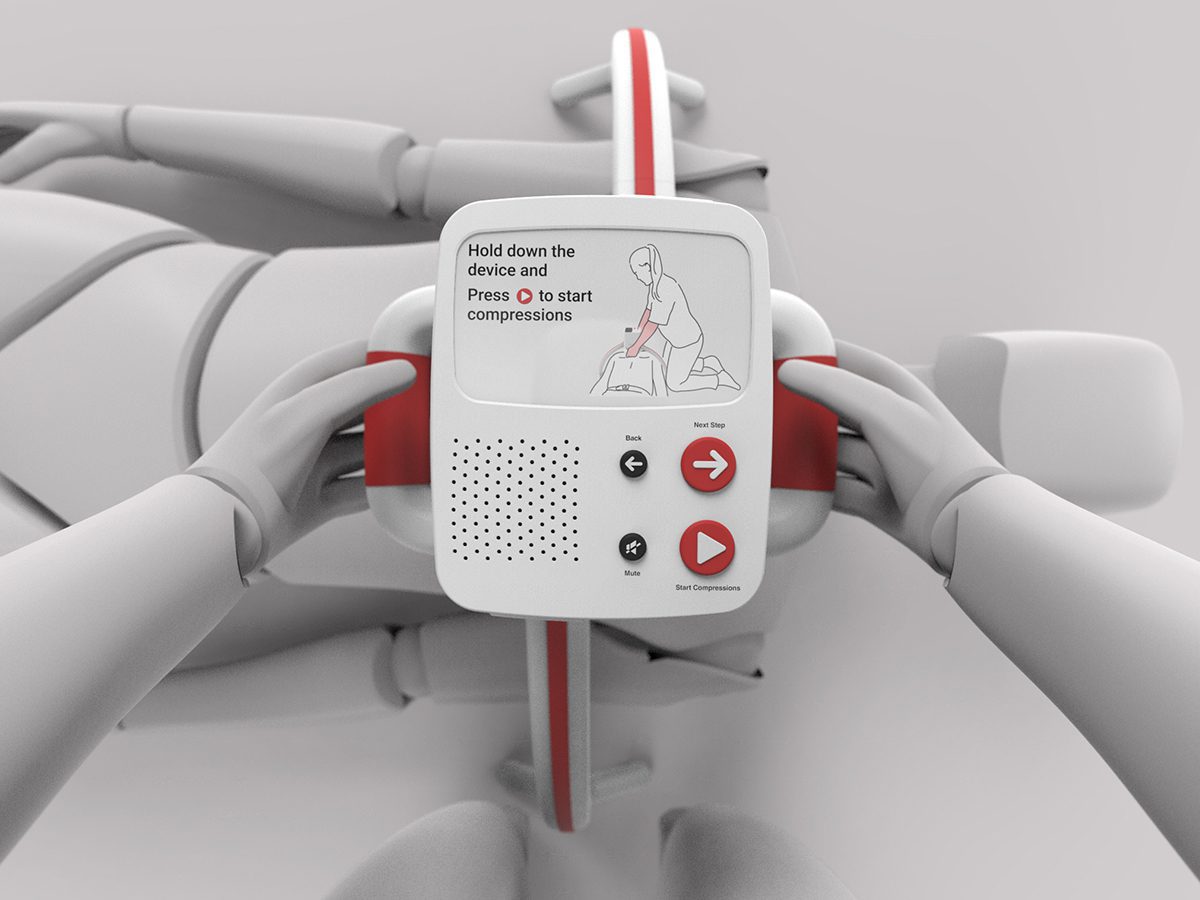
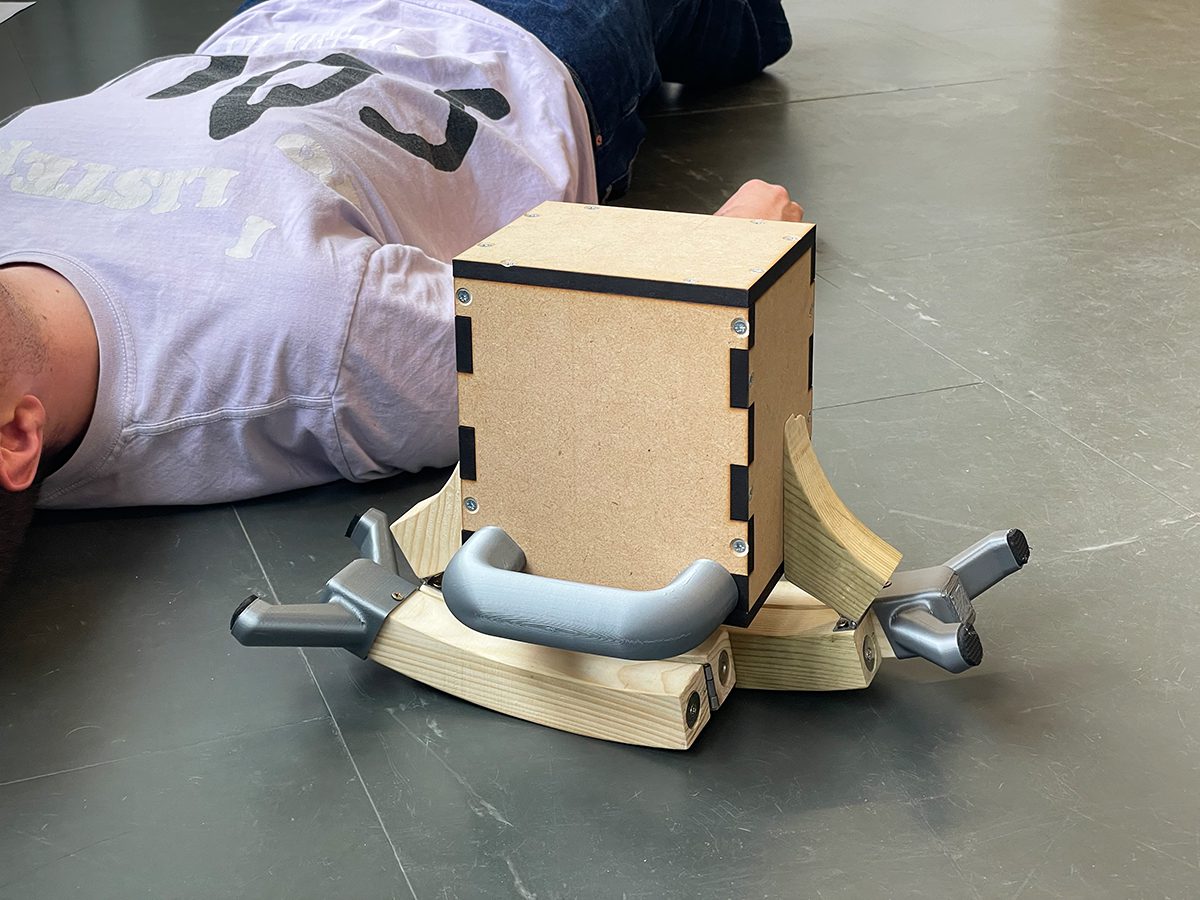
Prototyping
Prototyping activities were fundamental to assess the design’s stability, ‘foldability’ and intuitiveness. This was achieved through a range of low to mid-fidelity prototypes, and a final interactive prototype used to undertake final user evaluations.
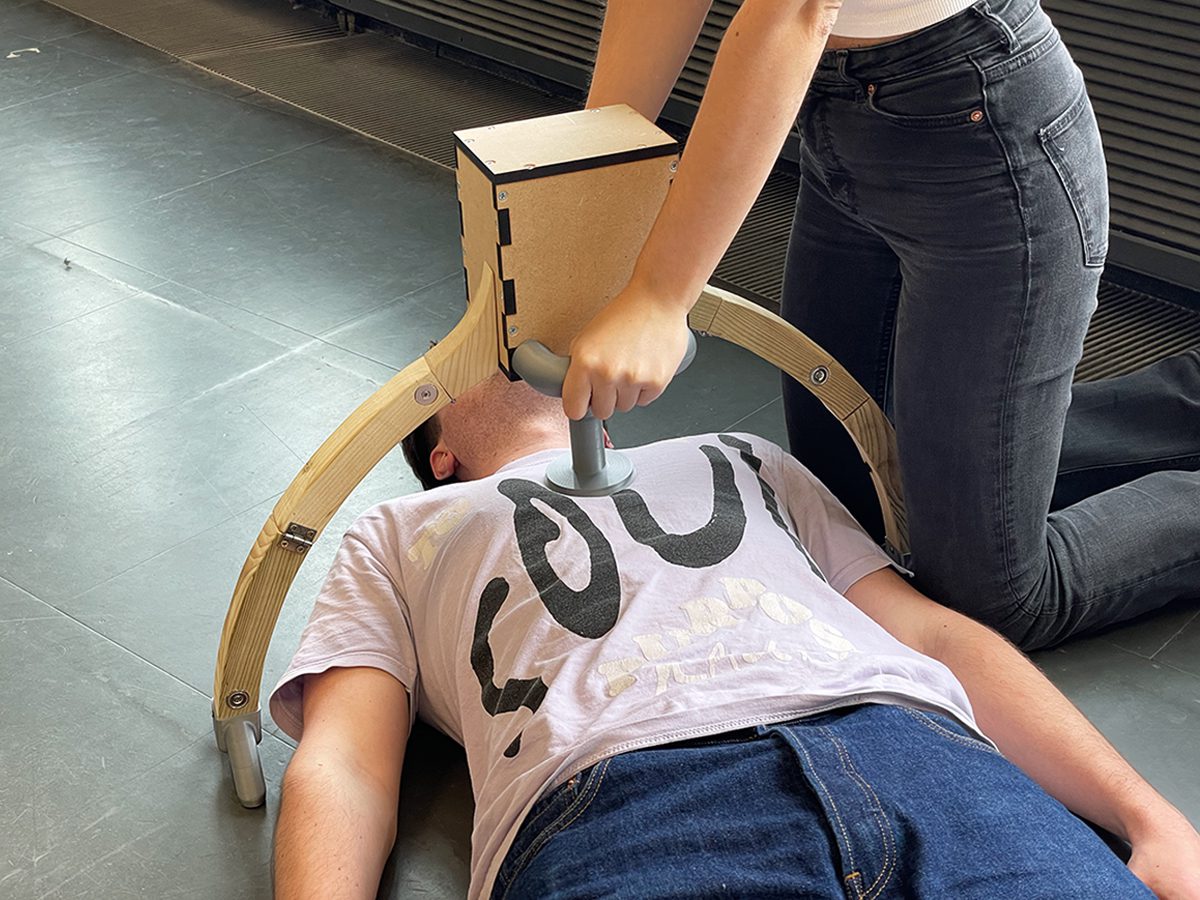
User Testing
User testing was completed to ensure the design could accommodate a wide range of both patients and responders. Re-enactments of emergency scenarios also allowed for identifying risk prone situations and refining the product’s interaction.
Other Work
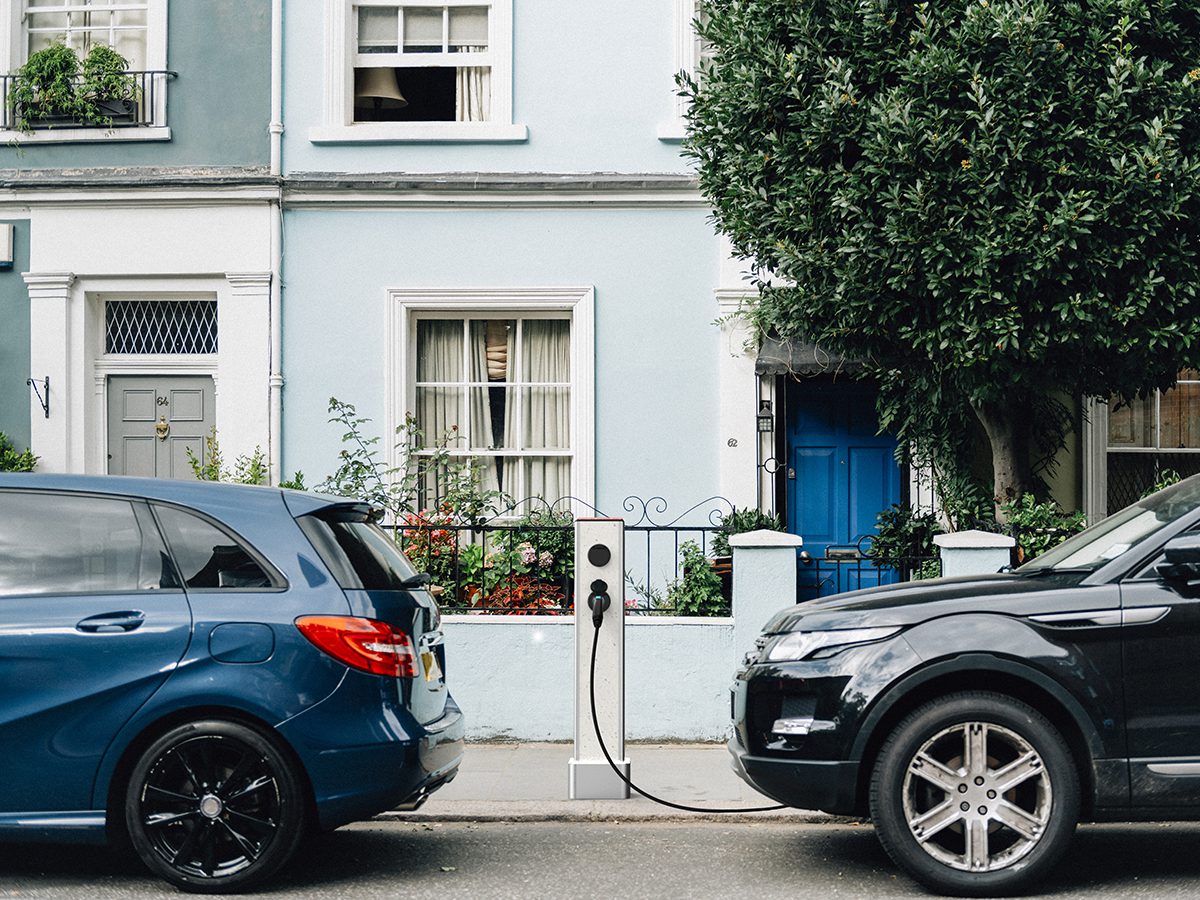
EV Charging Station
Responding to FSW’s Live Projects brief, this EV Charging Station was designed to blend into any urban area where there is the desire to increase accessibility to charging facilities.

Design Features
The design takes inspiration from architectural elements, incorporating different material panels that allow personalization for each location, whist also facilitating ease of repair and maintenance. This device also provides battery health tips to help users preserve and maximise their vehicle’s battery life, in addition to the LED lights to increase the charging point’s visibility and indicate plug availability.
Awards
- 2023 Loughborough University’s Live Projects – 1st Place
- 2022 Diploma in Professional Studies
- 2020 Starpack Awards – Highly Commended
Work Experience
2021-2022 – Junior Product Designer at Idea Reality (Design Consultancy)
Working as part of Idea Reality’s design team during my placement year provided me with the opportunity to learn and develop my skills as a designer, from problem solving and ideation, to CAD and concept design through to 3D printing and design for manufacture. The responsibility of keeping in contact with suppliers and presenting to clients hugely improved my communication skills and confidence as a designer.
Visionary Thinkers
Visionary Creators
Visionary Makers